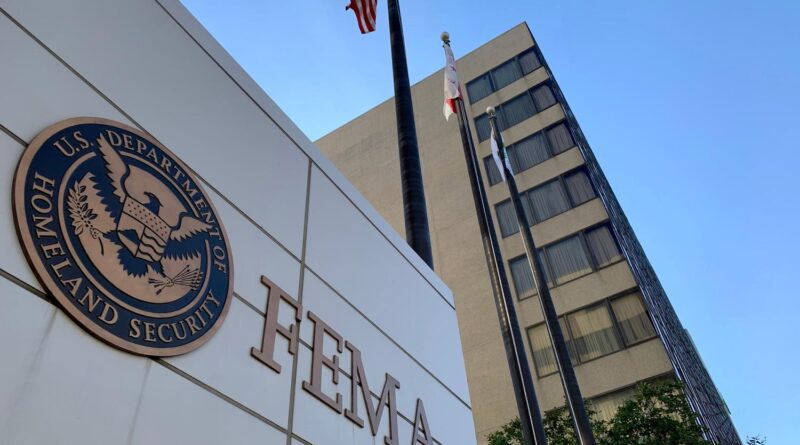Uncertainty Looms: FEMA’s Role in Rising Climate Threats
Traditionally, our belief was that amidst the chaos of rising waters and the devastating storms, the central government would step in. In distressing situations like these, the call for assistance and the response from our government was presumed. After all, our shared principle, symbolized by ‘E pluribus unum’ (‘Out of many, one’), emphasizes the union of states in the face of adversity. We recognized that today’s hurricane victim might be vulnerable to tomorrow’s tornado, reinforcing our shared vulnerability to natural calamities. In these circumstances, the Federal Emergency Management Agency (FEMA) emerged as a beacon of hope.
Upon its creation, FEMA was viewed as an entity capable of tackling disasters so massive that they could potentially overburden the resources and resilience of local and state agencies. Following an official declaration of a state of emergency, the governor had the power to approach the country’s president for federal assistance via FEMA.
FEMA assumed a plethora of responsibilities encompassing the Federal Insurance Administration, the National Fire Prevention and Control Administration, the National Weather Service Community Preparedness Program, the Federal Preparedness Agency of the General Services Administration, and the Federal Disaster Assistance Administration activities from the Department of Housing and Urban Development. The agency’s proactive involvement during the partial core meltdown at the Three Mile Island nuclear station is noteworthy.
The agency conferred multiple benefits such as providing specialist expertise to local and state governments, earmarking funds for restoration efforts and infrastructure development, and guiding individuals to secure low-interest loans in association with the Small Business Administration. Funds were also allocated for training the response personnel across the nation.
Climatic and weather disasters, each leaving behind a trail of destruction to the tune of billions of dollars, have been a recurring phenomenon in the United States. These include winter storms, droughts, tornadoes, forest fires, flooding, and hurricanes. Until recently, FEMA’s role in mitigating the ramifications of these calamities had been universally acknowledged.
The recent proposals, however, have raised concerns as they could place an unsustainable burden on state and local bodies, while potentially eroding our solidarity and unified response toward crises. The proposal could potentially shift FEMA’s focus away from providing maximum assistance to the people affected by such disasters.
Maintaining premier response priority toward rising waters, cyclones with gusty winds, and tornadoes demolishing properties could become challenging. Reflecting on these changes, the impact they might have on our capabilities to manage the escalating climatic crisis is undoubtedly daunting. Whether or not the leadership of FEMA will be able to avert such disasters, is a question that remains unanswered.
Simultaneously, our coastal settlements are steadily falling prey to the progressively increasing threat of surging sea levels. Last year’s sea level rise surpassed expectations, and the annual rate of sea level rise has over doubled in the last three decades, reflecting a persistent increase.
Regrettably, the preoccupation with political tactics appears to overlook the escalating threats posed by climatic and weather disasters. The frequency and intensity of hurricanes, floods, and forest fires are growing in tandem with rising temperatures. FEMA, which is now responding to three to four times as many disasters as it did in the 1980s, faces an overwhelming task.
With each passing day, the belief that political strategy and posturing will triumph over scientific reality seems to be growing. Numerous scientific studies corroborate the increased severity of hurricanes and the rising global temperatures we are witnessing. The tragic tales of disasters such as Hurricane Katrina that claimed over 1,500 lives and displaced millions, remain shrouded in uncertainty even today, exemplifying the challenges we face.
Past incidents like Hurricane Katrina underscore a topical quandary – dealing with the escalating scale of climate and weather hazards while grappling with our capacity to effectively respond. The idea proposed by President Trump to lessen the federal government’s commitments, shifting these responsibilities onto the states, could potentially compromise our ability to react.
In an era of intensifying climate threats, the perceived restriction in the scope and effectiveness of our disaster response mechanism is alarming. It is clear that nature shows no regard for political dynamics, race or national borders. Thus, it seems irrational to believe that man-made boundaries or the autonomy of local towns and cities, or even states, could contribute significantly to the response toward climate disasters.
Given escalating climate risks, FEMA’s role appears more crucial than ever before. The agency’s return, equipped with the full strength and an unwavering commitment to assist citizens before, during, and after disasters seems of paramount importance.

